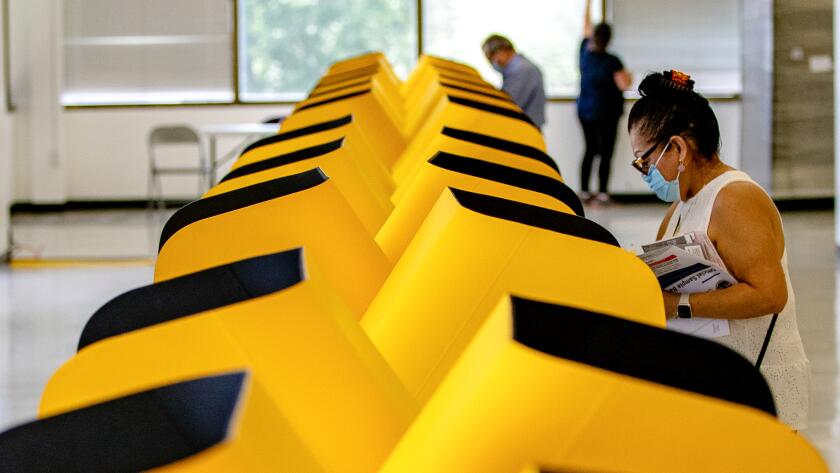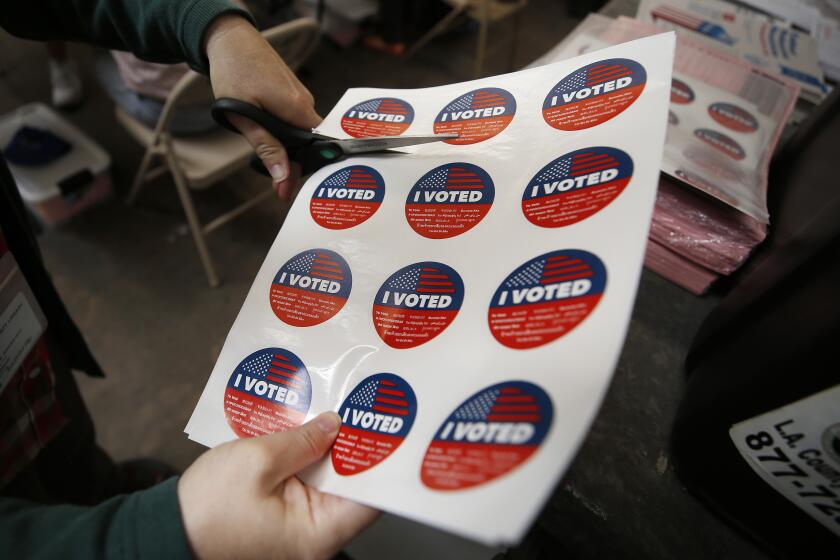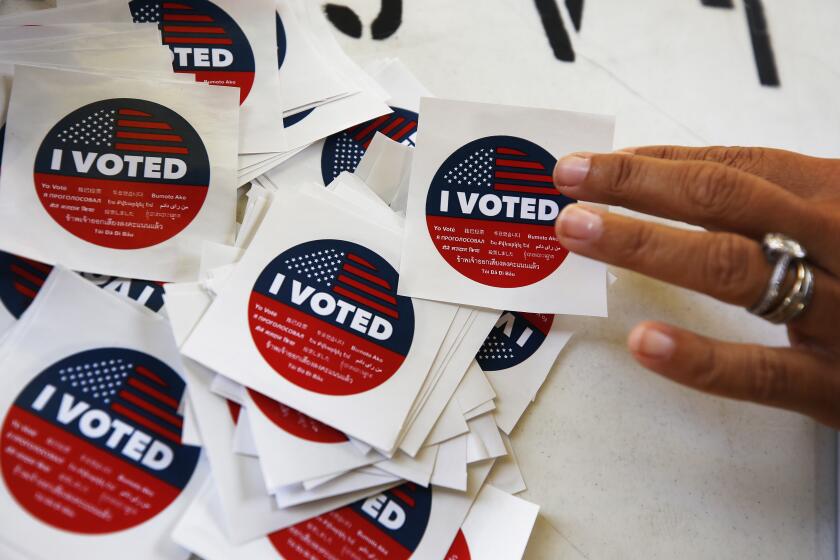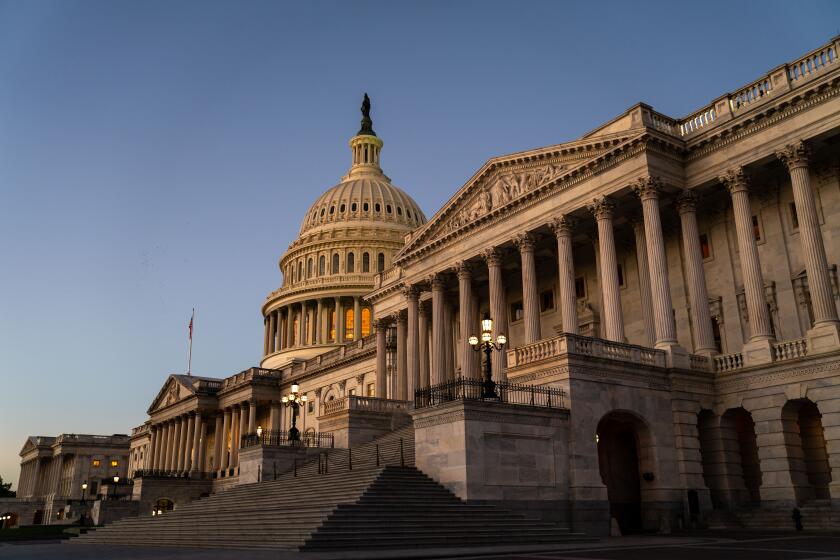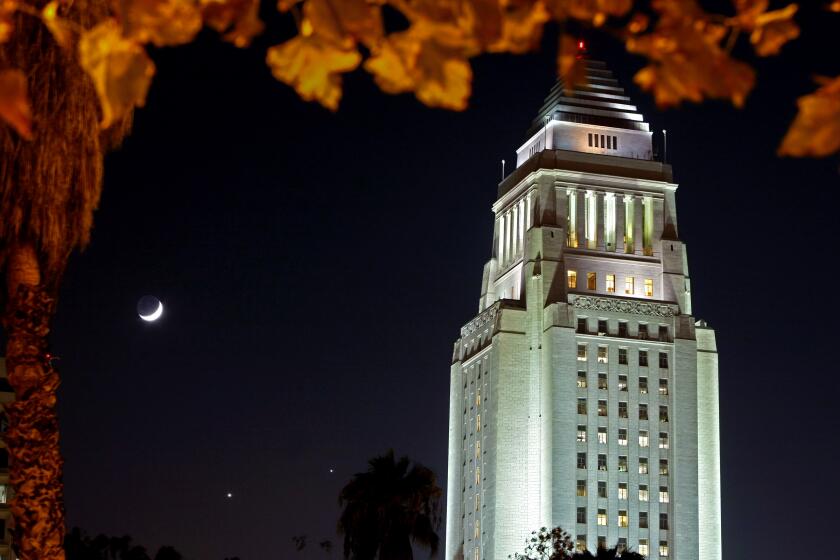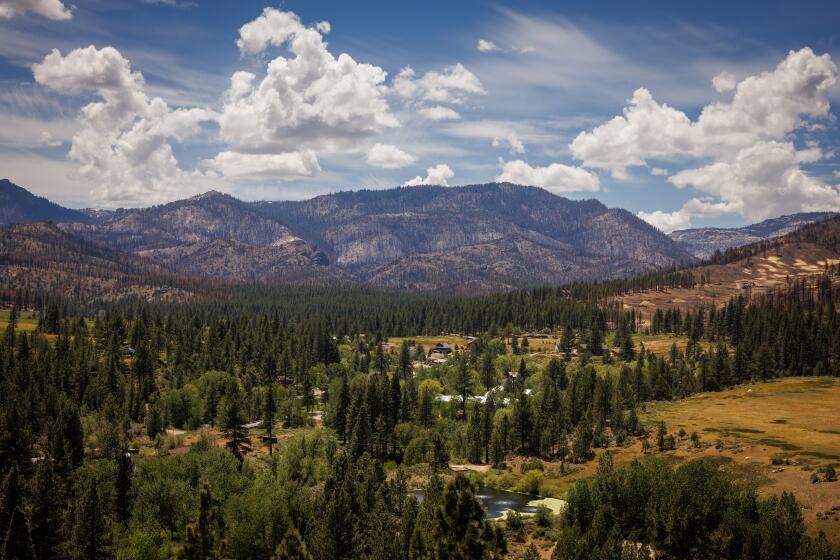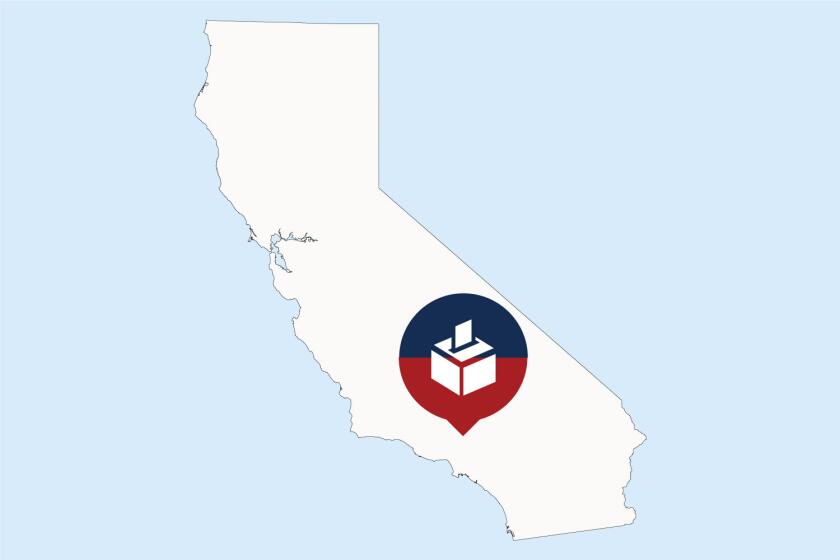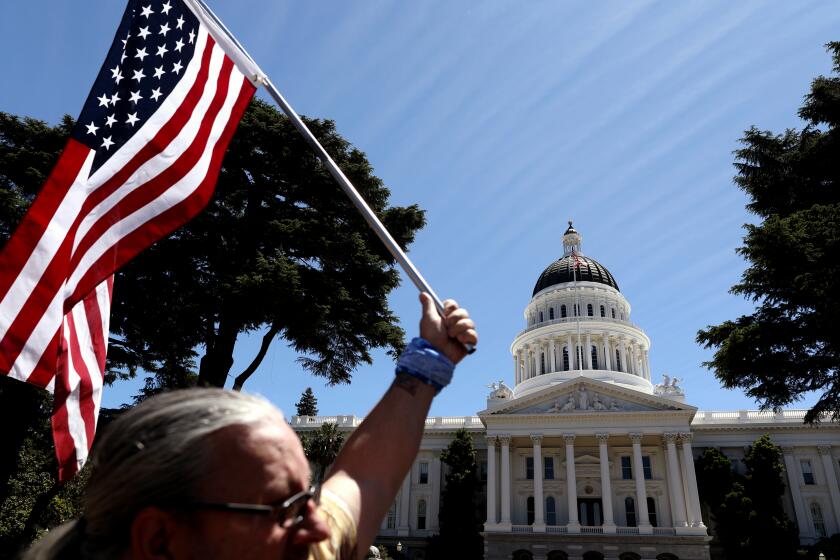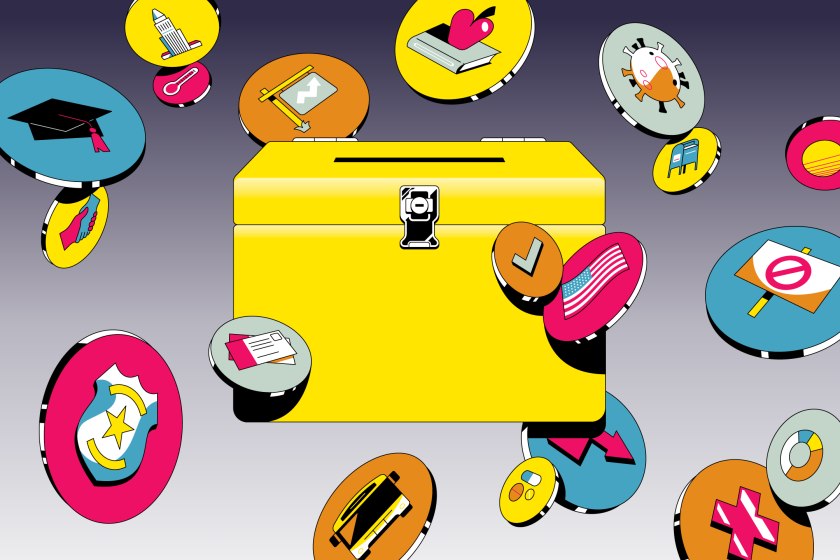‘Apathy hurts everybody.’ In California’s primary, dismal voter turnout before election day
- Share via
- Share via
Judy Nguyen is frustrated that anyone with enough money or the right connections can run as a candidate in an election. She’s disappointed she hasn’t seen immediate, tangible change under President Biden. And she feels for Americans who are trying to survive in an era when gas prices are skyrocketing and baby formula is scarce.
But she realizes she’s also part of the problem.
“I’m one of those people who talk like, oh, I want change, but then I don’t always vote,” Nguyen said as she stood in the shade with her baby in a Brea shopping plaza. “I know I’m in a way at fault, but sometimes it’s just so hard to know who to believe” and who to vote for, she said.
The 40-year-old Democrat from Fullerton voted for Donald Trump, then for President Biden, and for Gov. Gavin Newsom. She isn’t happy with any of them.
“I’m just really sad,” she said, and she’s still deciding whether to cast a ballot in California’s primary election.
Across the shopping center, a handful of poll workers waited for people to arrive at an early voting site. Over the course of an hour, one person showed up — it was another poll worker ready to start her shift.
Early turnout has been dismal before all polling sites opened Tuesday, election day, across California. Every registered voter in the state was mailed a ballot, but only 15% had gotten them to election officials or weighed in at early in-person vote centers by Monday night, according to election data reviewed by the consulting firm Political Data Intelligence.
California’s 2022 primary election is Tuesday. Here’s how to cast a ballot.
Election experts say the lackluster participation by Californians stems from a dearth of excitement over this year’s contests, which largely lack competitive races at the top of the ticket. It’s a stark contrast with some parts of the nation, where voter turnout is exceeding expectations.
“It’s a boring election,” said Paul Mitchell, vice president of PDI. “It’s clear from what we’re seeing that we’re going to have a low-turnout election despite the fact the state has made it easier than ever to vote.”
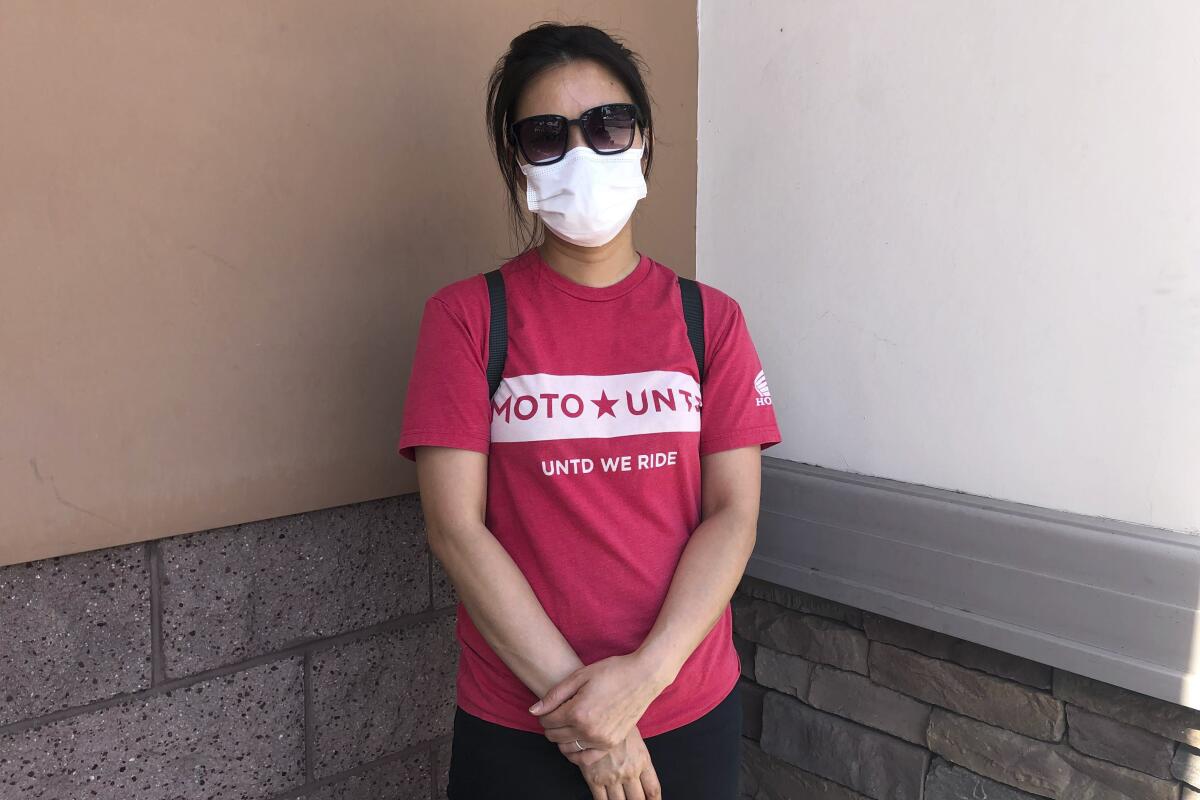
The Democratic consultant predicts primary turnout is likely to be under 30%. “Nothing puts this in better contrast than looking at Georgia right now: They’re doing everything they can, it seems, to make it harder to vote, yet they are having record turnout because voters there feel the future of the country is at stake.”
Georgia’s May 24 primary came after a GOP-backed law imposed new voting requirements and restrictions.
Some predicted that a leaked Supreme Court draft decision eliminating federal protection for abortion access as well as a spate of high-profile mass shootings could motivate voters. But in California, this does not appear to be the case.
California’s early returns are a major drop off from the same period in September’s gubernatorial recall election, when nearly 38% of voters had voted as of election eve. Some 22% of voters had cast ballots at the same point before the last midterm primary election, in 2018, when ballots were not mailed to all California voters.
That primary offered enraged Democrats their first opportunity to rebuke then-President Trump. More than 37% of voters turned out — the highest for a midterm primary in two decades. About 58% of voters cast ballots in the recall, a race that presented a sharp contrast between Democratic Gov. Gavin Newsom and the leading GOP challenger, radio host Larry Elder.
California’s 2022 primary election ballot includes races for governor, attorney general, the Legislature and Congress, as well as local contests.
“Election fatigue is definitely part of it, since the recall was so blustery. It was in everyone’s face. This is a much more low-key election,” said GOP strategist Beth Miller. “Because the recall election was last year, voters feel like they’ve already voted or had an election.”
Voters may be biding their time and turn in their ballots or vote on election day, she added. (Mail ballots postmarked by Tuesday will be counted as long as they are received by June 14.)
“We don’t know,” said Miller, who has been working in California politics for decades. “I’ve never seen it this slow in terms of ballots remaining out. Clearly voters are either completely disinterested or just now focused as election day nears.”
Some voters who haven’t cast ballots this year said they had simply lost trust in elected officials.
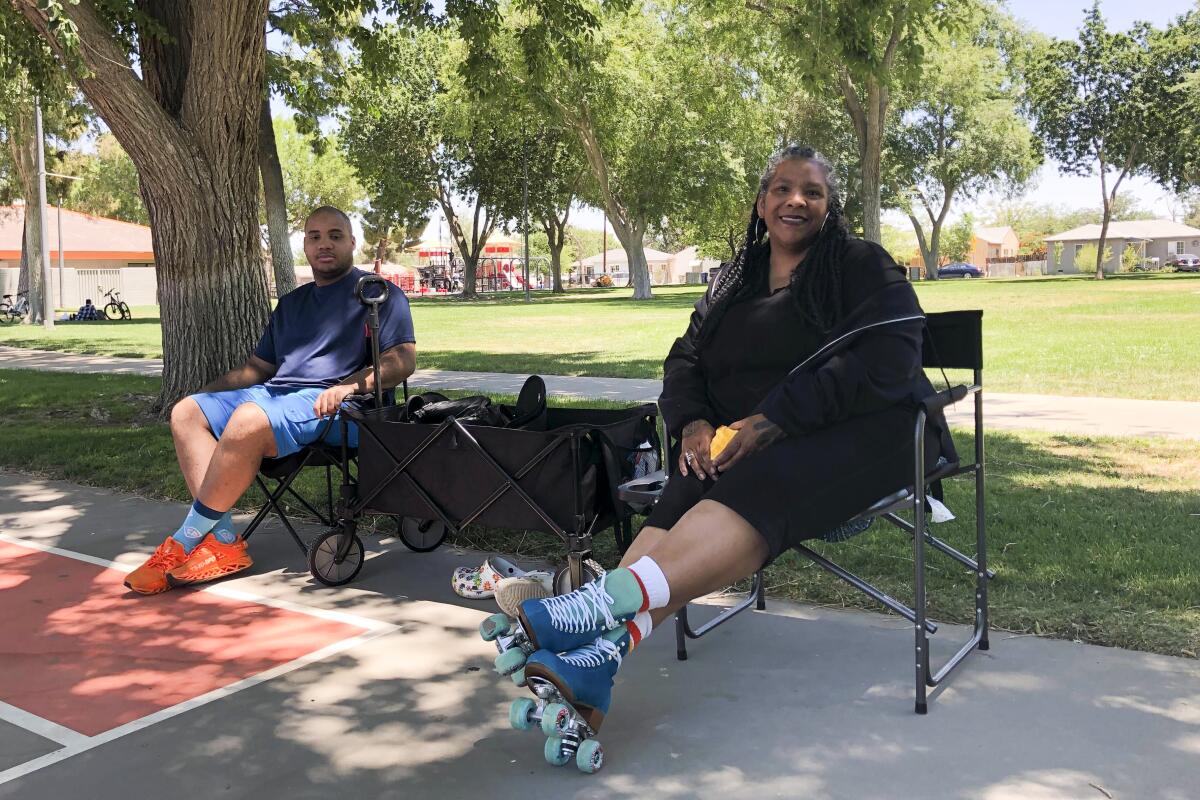
“They’re all the same. They say what they need to say to get you to vote,” said Kimela Ezechukwu, a Democrat who lives in the northern Los Angeles County district represented by GOP Rep. Mike Garcia, which will be among the most contested congressional districts in the nation in November.
The 54-year-old psychologist said she was more passionate about politics when she was younger, but now sees the system as something akin to “Game of Thrones.” Once politicians “get inside that political machine, that just somehow sucks their soul out.”
More on the primary
Ezechukwu makes it a point to vote in presidential elections, but hasn’t decided whether to cast a ballot in the midterm primary, she said as she sat with her son at a park in Lancaster. “I’ve found peace not watching TV or following politics. I’m trying to live a healthy life; be at peace. Shouldn’t that be the goal?”
Political experts said voter apathy, which typically increases during nonpresidential elections, may be compounded by anxiety — over issues ranging from mass shootings to high gas prices.
“There seems to be an endless, ongoing barrage of really bad things that everyone in this country and state is having to deal with,” said Darry Sragow, a veteran Democratic strategist and publisher of the nonpartisan California Target Book, which handicaps races. “Voters are very much at loose ends.”
Far lower turnout for younger voters
Election turnout is traditionally highest during presidential contests and drops during the midterms, especially among young and minority voters. In this primary, 19% of white registered voters had cast ballots as of late Monday, according to data received by PDI, compared with 8% of Latino, 15% of Asian American and 14% of Black voters. While 32% of voters 65 and older had returned their ballots, roughly 6% of those between 18 and 34 had, according to the PDI data
“Either you’re super involved being a young person … or honestly, it’s stressful and it’s kind of overwhelming to get into all of this,” said Ana Andrade, 19, as she ate a breakfast sandwich at Grand Central Market with fellow student Melina Deinum-Buck, 20.
Andrade, a USC student from Dana Point, and Manhattan Beach resident Deinum-Buck, who attends George Washington University, said gun control, abortion rights, climate change and drug decriminalization are issues of deep personal importance, but they also said they had not heard much about the primary election because they’d been studying abroad. Neither had voted, but both said they planned to.
“I need to do more research,” Deinum-Buck said.
Andrade added, “I’m not that educated on it yet.”
Little suspense at top of the ballot
Newsom and Sen. Alex Padilla face little-known and underfunded competitors, and the most interesting statewide contests appear to be for insurance commissioner and controller, contests that do not generally elicit passion from voters.
“The thing that guarantees you’re voting is the top of the ticket,” said Raphael J. Sonenshein, executive director of the Edmund G. “Pat” Brown Institute for Public Affairs at Cal State L.A. “And there’s like zero here. The governor’s race is a complete afterthought.”
Republicans are expected to retake control of Congress in November; the party in the White House traditionally loses seats in the first midterm election in its tenure, and President Biden’s approval ratings are low, with economic concerns at the top of voters’ minds.
The top two vote getters — regardless of party — in the June primary will move on to the November election.
California is unlikely to determine control of the House, but it is expected to influence the margin of the GOP’s power because of the number of competitive races in the state. But voter turnout in most of the scrutinized races largely mirrors the paltry turnout across the state, with a few exceptions.
In the open race to represent the newly drawn 3rd Congressional District, which includes South Lake Tahoe and Mammoth Lakes, 21% of voters had cast ballots as of Monday night. In Democratic Rep. Mike Levin’s district, which straddles Orange and San Diego counties and is being contested by multiple GOP candidates; 21% of voters had weighed in as of Monday.
Some in Levin’s district, even those who had not yet voted, said they were gravely concerned about the direction of the nation.
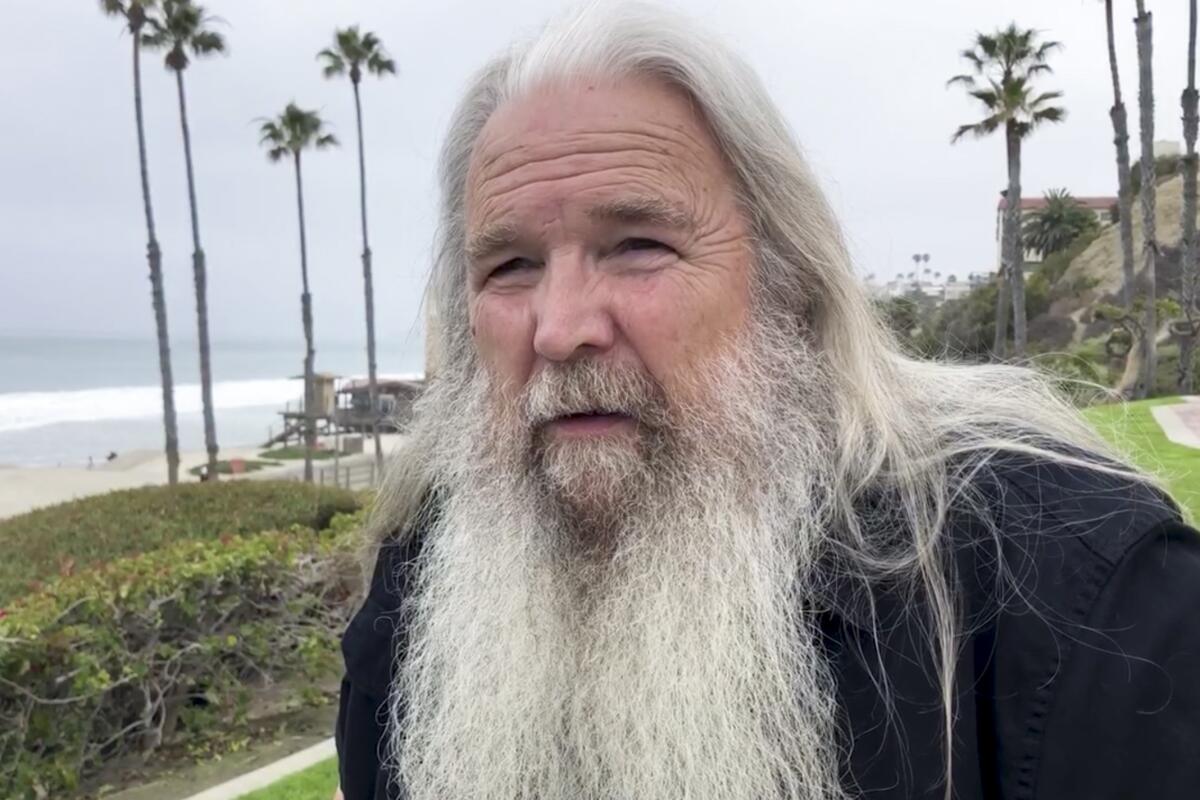
“It’s a really confusing time,” said Robert Claypool, a Greek Orthodox priest, after he finished his daily walk on the beach path in San Clemente.
The 69-year-old lamented how it now takes about $100 to fill his small car with gas and wished Newsom would temporarily waive the state’s gas tax. Groceries are now more expensive when he shops for his wife and five children. And the registered Republican worries about formula shortages for newborns.
“I’m willing to stand by extreme oil or gasoline prices, but what about kids? That’s just terrible,” Claypool said, adding that he and his family plan to gather Tuesday and decide who to vote for.
“Everybody should vote,” he said. “If you stop voting, that apathy hurts everybody.”
The battle for L.A. mayor
The most high-profile race in the state is the mayoral contest in Los Angeles. Nearly $33 million has been spent on advertising in the race — more than three-quarters of which came from one billionaire candidate — making it one of this year’s most expensive contests in the nation, according to AdImpact, which tracks political spending.
Despite the onslaught of television ads, mailers and texts, about 14% of the city’s registered voters had weighed in as of Monday, according to PDI. Billionaire developer Rick Caruso and Rep. Karen Bass are the top contenders, according to polls, with City Councilman Kevin de León trailing.
Sonenshein said L.A. voters may not understand that if a mayoral candidate receives more than 50% of the vote on Tuesday — unlike in most state or federal elections — he or she wins, and there is no runoff.
“I think we’re on the cusp of a huge election in November, both in California and nationwide,” he said. “The problem in Los Angeles is that people don’t always realize you might not get a choice in November.”
Polls show there are three leading contenders in the race to succeed Eric Garcetti as mayor of Los Angeles. Here’s a guide to the top contenders.
This is the first open mayor’s race since city leaders decided to consolidate municipal elections with state contests in hopes of increasing voter turnout. The last contest without an incumbent — in 2013 — drew nearly 21% of voters in the primary and a little more than 23% in the runoff.
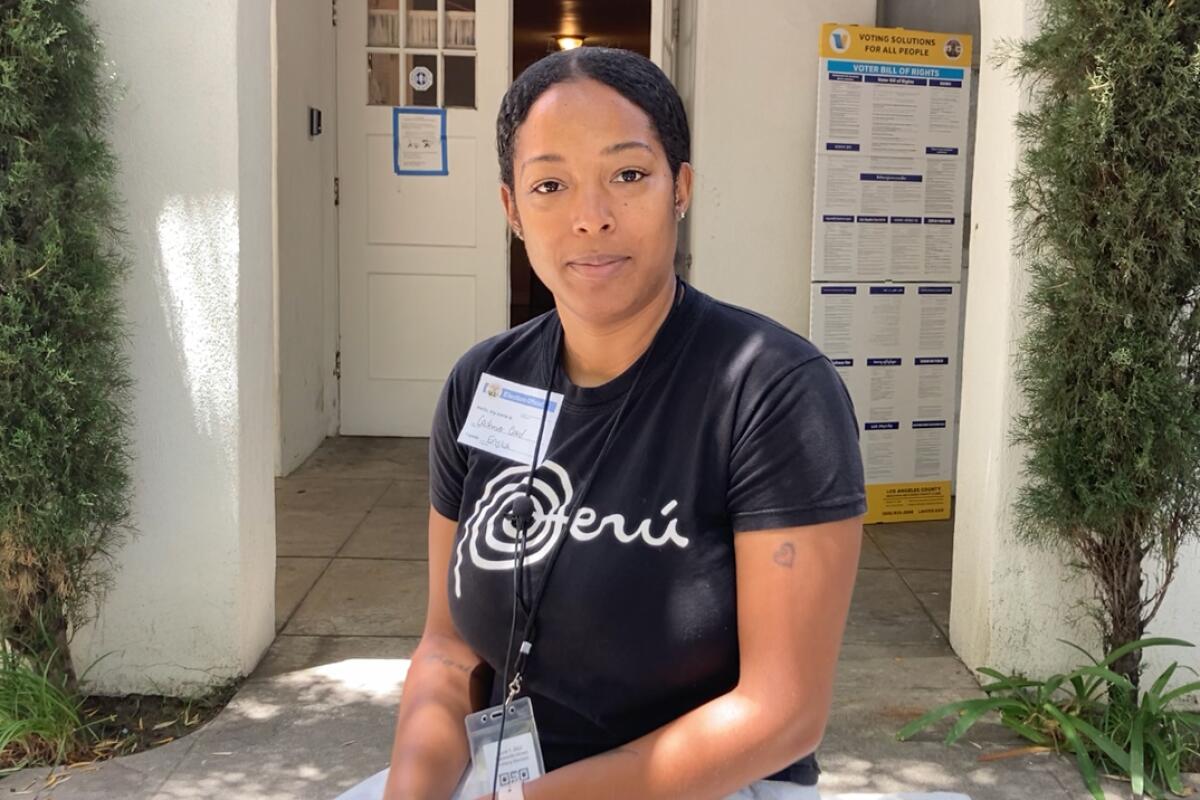
Cashmier Cloud, a 34-year-old employee of the Los Angeles County Department of Mental Health, was among the voters who had already cast her ballot for Rep. Karen Bass for mayor. She recently ran into the congresswoman at a grocery store, but said, “I was always going to vote for her.”
Cloud was taking a break from a poll-working shift last week at St. Paul Evangelical Lutheran Church in the Jefferson Park neighborhood. There was plenty of time — the polling place had nearly a dozen volunteers and hardly any voters.
Cloud, 34, has concerns about Caruso. “He’s had the finances to assist L.A. years ago,” she said, noting the shopping centers he owns. “You’re at the Grove with all this money and influence but you haven’t done anything in the past, so what’s different now?”
Zack Tomas, 77, had a different view as he sat at an outdoor table at the Grove.
“He’s a good man. Is he a good politician? I don’t know. I hope he is, and I wish him the best,” said the limousine driver, a registered Democrat. Tomas was unsure if he would vote.
Recall in San Francisco motivates voters
Turnout is higher in San Francisco, where 21% of registered voters had cast ballots as of Monday. A divisive attempted recall of the city’s progressive Dist. Atty. Chesa Boudin is helping drive turnout. The city has experienced smash-and-grab robberies at department stores in tourist areas as well as daunting homelessness and open-air drug use.
Edward Samonte, 63, is among those frustrated by Boudin’s performance since the Democrat was sworn in in 2020. “I’m sure he does some good for the city,” the Muni worker said near a Garfield Square bus stop, “but I’m hearing more negativity than good, so I voted for the recall.”
Cindy Mendoza, 50, said she planned to vote against the recall. “We need to give elected officials the chance to do their job. The work that they do doesn’t happen overnight or rest on one case,” she said from a Potrero Hill garden where she volunteers.
Mendoza added that she feels overwhelmed by the number of recent elections, which include a contentious school board recall in San Francisco earlier this year.
“It’s too much,” she said.
Times staff writer Anabel Sosa in San Francisco contributed to this report.
Rural usually means Republican. But this county is a Democratic speck in California’s sea of red.
More to Read
Get the L.A. Times Politics newsletter
Deeply reported insights into legislation, politics and policy from Sacramento, Washington and beyond. In your inbox three times per week.
You may occasionally receive promotional content from the Los Angeles Times.
